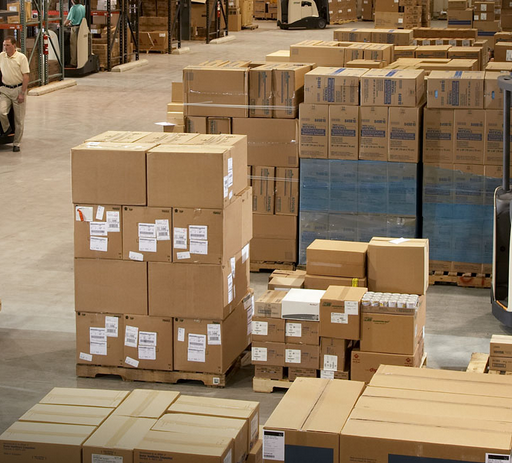Building a Company Culture of Investment in Success is the Alliance Way
The field of material handling continues to rapidly evolve, driven by new technologies and ever increasing consumer demand for high-speed service. Material handling companies that succeed in this challenging environment are innovating to stay ahead of the curve, investing in their workforce, and focusing on building strong company cultures that withstand unpredictable markets. Alliance Material Handling, Inc. is an example of a company that sets itself apart from the competition, providing best in class service to its customers, and building a company culture of investment in success. Alliance is based in Jessup, Maryland, and has 175 employees serving customers in Maryland, Virginia, D.C., Delaware and West Virginia.
Building An Employee-Owned Company
Alliance was originally founded in 1955 and at the time was a dealer for the Clark line of products. Over time, the company expanded to offer products from Crown, and today is also a dealer for Doosan and CombiLift. In 2002, the former owner, Hobb Santel, hired Thomas Albero as CFO, and he has played a pivotal role in building the Alliance in existence today.
In 2004, the current CEO, Hobb Santel, decided he wanted to sell the company. The initial plan was to accomplish the sale through a management buyout, but a number of roadblocks prevented them from coming to an agreement. Albero suggested that the company instead consider becoming 100% employee owned (ESOP). “I thought it would be a competitive advantage for the company to have every technician be an owner in the company,” says Albero. In addition, moving to an ESOP model would give employees the opportunity to build a better future for themselves, and more stability for their families. “I’m a big pay it forward person,” says Albero, “I grew up with basically no money and watched my mother struggle financially for most of her life – I thought many of our employees were in similar positions to my mother’s. I believed moving to this model would allow them to change that position.”
In 2004, the company began the shift to an ESOP model with 31 percent employee ownership. Albero was promoted to President in 2005, and in 2008 the ESOP bought out the remaining 69 percent of the company, and Albero took over as President and CEO. Albero’s prediction that employee ownership would be good for both the company and its employees has been proven accurate. Turnover rates among technicians, a particularly difficult position to hire for, is very low. “If a technician stays at Alliance for three years, they see such a significant value in their shares that it’s highly unlikely they would leave,” says Albero. In addition, company performance has been phenomenal. At the beginning of the ESOP period, Alliance generated $25 million in revenues. This year, it will surpass $100 million.
Creating a Company Culture for Success
Culture is a huge part of what makes Alliance successful. Being an employee-owned company means each individual has incentive to do their best to ensure the company is thriving and growing. Alliance leaned into that individual investment by creating its 30 Core Fundamentals that all employees follow and model in their work. Each week, the company focuses on a different “Fundamental of the Week.” An employee creates a video that shares what that week’s fundamental means to them, and how they are using it in their work. The first five minutes of meetings at the start of the week are used to check in with employees about what they are doing to live by that fundamental.
Of the 30 fundamentals, Alliance has identified five core fundamentals that every employee must follow – “we hire and fire based on those fundamentals,” says Albero. Those five are: Do the right thing always; Do what’s best for the customer; Pay it forward; Embrace change; Have fun. By focusing on their shared core values, Alliance employees hold one another to high standards, and encourage each other to do their best work for their customers.
Being an employee-owned company means each individual has incentive to do their best to ensure the company is thriving and growing.
The strong culture at Alliance helped the company to weather the challenges presented by COVID-19. The company remained fully open during the pandemic with a few exceptions in the first week for employees with young children. The pandemic began just as Alliance was beginning to expand its business significantly, and its employees were committed to coming into work despite challenges like closed daycares because they wanted to be part of that growth. Albero believes that being an employee owner was the driving factor that kept employees engaged with the company and pushing its growth forward despite the challenging environment created by the pandemic.
Alliance also got creative to make sure it retained all of its employees, even though so many of their clients were shut down in the first half of 2020, severely impacting their revenue. Albero credits the PPP loans for allowing Alliance to maintain its entire staff, and to be prepared for the rush of business that came its way as companies reopened and consumer demand skyrocketed in the second half of 2020. Alliance focused on keeping their employees healthy by closing its offices to outsiders, even to its road technicians, and implementing air purifiers throughout the building. Because of these efforts, the company had no significant cases of COVID throughout the pandemic.
Growing the Footprint
Alliance is continuing to grow organically by identifying territories that do not have access to some of the lines that the company carries and expanding its geographic footprint to serve those areas. The company now has five branches expanding into Maryland, Washington, D.C., Virginia, Delaware, and parts of West Virginia. Alliance has also made large changes to the balance of services it provides in order to keep up with the needs of clients. For example, prior to the COVID-19 pandemic, Alliance’s business model used to be 95 percent forklift, and five percent warehouse solutions. In 2020, the company launched a huge effort to grow their warehouse solutions business with their partnerships with SpaceRAK, Nashville Wire and others. Through strategic hires and customer acquisitions, warehouse solutions is now 60 percent of Alliance’s business, and 40 percent is forklift related.
Adapting to the Customer
Like many others in the field, Alliance has had to contend with the changes brought about by the rise of the internet, and demand for automation. Albero pointed out that new technologies have led to a different kind of client. The vast amount of information available online has created highly informed customers who frequently come to their own decisions about the components they require, even the specific brand they want to buy, before they ever speak with an Alliance employee. To work with these customers, Alliance has to ensure that its employees are extremely knowledgeable and able to address high level concerns or questions that customers may have. To quickly get new staff up to speed, Alliance requires all staff to complete two to four weeks of intensive training, including completing the MHEDA LMS Forklift 101 course, and MHEDA’s LMS course on systems and storage handling as well. Staff must also complete rotations through each of the company’s departments so they have an understanding of how the full process works, and can communicate that clearly to customers. Alliance has also brought on in-house consultants who help customers to utilize tools like Crown’s InfoLink for its forklifts, and build reports in the InfoLink system that allow warehouse managers to manage their fleets more efficiently.
Investing in Employees
Alliance is also taking steps to mitigate the shortage of qualified technicians in the field by running their own in-house training program. The company accepts three new recruits into this program every 90 days, and puts them through a rigorous year-long training program. New recruits spend 90 days working with a trainer in the shop, 90 days side by side with a senior technician, 90 days on the road with a senior technician, and finally 90 days on the road by themselves tackling basic maintenance jobs with support from lead technicians. The goal is to build technicians who, at the end of the training period, are able to tackle most jobs on their own with some support from a lead technician. Albero acknowledges that this program is a significant investment. For every three recruits, he expects one, maybe two, to complete the program. Most of the recruits are young, and many decide the work is not the right fit. This high turnover rate might be off-putting to some companies, but Alliance sees it as a necessary investment. “We’ve realized we have to make these investments because technicians are so hard to come by,” says Albero. “If we get them at 18 years old, a few years later they could have $100k in stock in the company, and they are going to stay with us. If we get them in the long term, we don’t worry that it’s costly in the short term.”
Building for the Future
Looking ahead, Albero sees a number of challenges facing the field of material handling, one of which is the continuing consolidation of manufacturers. Mergers can put dealers like Alliance in a difficult situation. If a merger creates two dealers in the same area that are now competing, the manufacturer has to decide which dealer will succeed. Alliance has to be sure it’s the biggest and best in the area to avoid the risk of being shut down by a merger.
Automation of course will also continue to play a significant role. One of the potential risks on Albero’s mind is how automation will change demand for service. For example, misuse or abuse billing is currently a large part of Alliance’s service billings. But it is possible that automation could remove many of the errors that come with human drivers, and the subsequent accidents or damage to machinery. If that happens, Alliance will have to find new ways to grow to offset the decline of that billing.
Albero believes that keeping employees and management all running smoothly as a team is a critical part of Alliance’s success both now and in the future. Five years ago, the company began implementing the Entrepreneurial Operating System for Business (EOS) model of management within the company. This system creates a scorecard for every employee in the company with individual goals. The management team meets every Monday to review those scorecards, set and review goals for the quarter, and bring up the most pressing issues. The goal is to solve those issues in the meeting so the team can move forward immediately. Individual departments meet after the leadership team and are able to incorporate decisions from the leadership into their goals going forward. This rhythm of consistent check-ins, goal setting, and decision making keeps everyone in the company on the same page and working towards the same results.
With its focus on best practices in management and customer service, and an employee-owned and driven culture, we can expect to see Alliance at the forefront of the field for many years to come.




